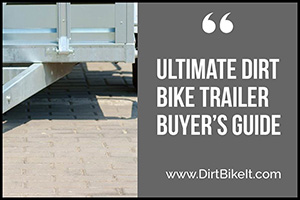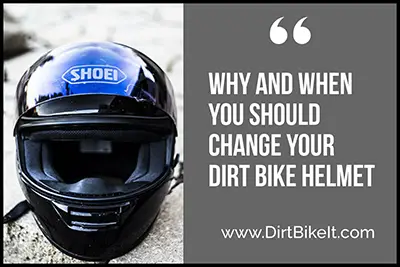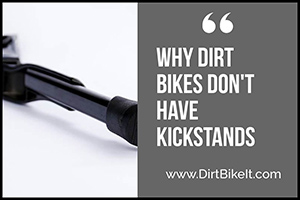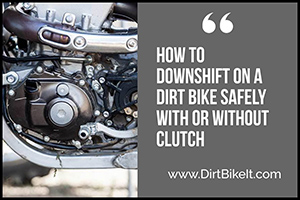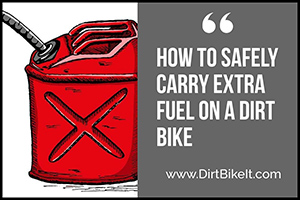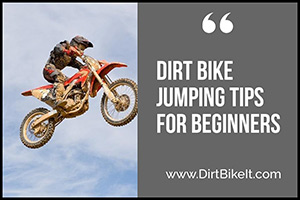Ultimate Dirt Bike Trailer Buyer’s Guide
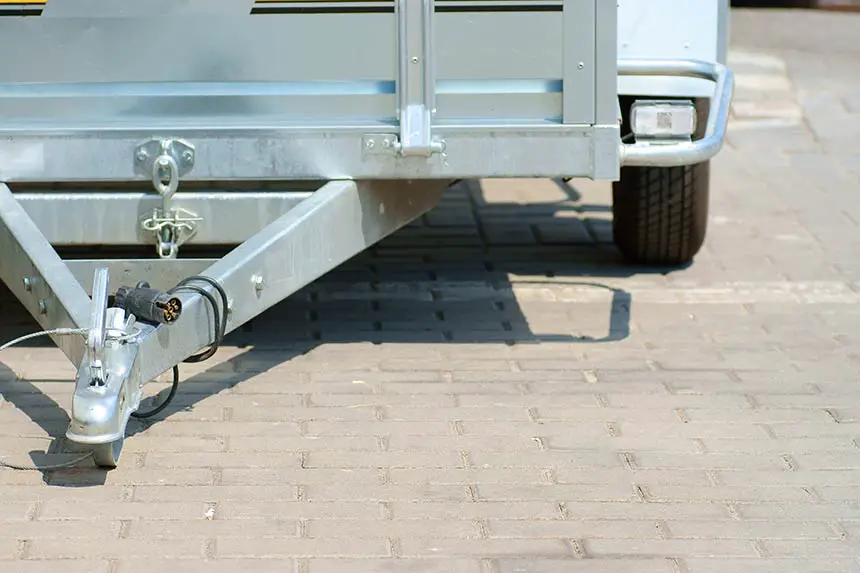
Ultimate Dirt Bike Trailer Buyer’s Guide
If you are reading this article chances are you want more information on what, how, and where to buy a dirt bike trailer for your weekend warrior machine. Chances are you want to ride your bike, but likely can’t in your neighborhood unless you are living on a farm or off the beaten path. But in any of these cases you’ll still need a trailer to haul it to motor-cross events and locations to enjoy your bike with family and friends. It can be quite confusing choosing the right trailer for you, your needs and of course, how much you can afford. There are two types of trailers – open and enclosed. These are different from other flatbed trailers with key features to accommodate the hauling of dirt bikes for long distances.
- Both types have tracks to keep the wheels of the bike/s from sliding side to side.
- They have tie down features to hold the bike/s in place and avoid getting knocked down while the vehicle is on the move.
- They either tilt or have built-in ramp/s for easy loading and unloading of the dirt bikes.
Open Vs. Enclosed Trailer
Before getting into the nitty gritty of trailers, let’s get the basics out of the way – open versus enclosed trailers. Here we’ll cover the pros and cons of each one and let you decide which is best for you.
Open Trailer
- Open dirt bike trailers are hands-down more economical than enclosed ones in two ways:
- It is definitely cheaper because less material is used.
- It is also fuel-efficient because it causes less impact on the mpg (miles/gallon) as air can pass through, which consequently causes less drag.
- An open trailer is easier to tow because you have a 360-degree view of the road and surrounding areas when you are parking and thus it is easy to backup and check on cargo while driving.
- It is easily customizable for the least amount of cost.
Open dirt bike trailers also have disadvantages that should be considered:
- Exposure of the bikes to the elements such as wind, dusts, rain and extreme heat from the sun. Most users of open trailers use a plastic cover to keep the bike snug and protected.
- At anytime, if not tightly secured, something might fall off.
Enclosed Trailer
For enclosed trailers, there are 3 types out in the market, but for dirt bike hauling, the best is the flat face or round face trailer. Here are its advantages:
- Enclosed dirt bike trailers protect the cargo from the changing climate/weather conditions and from prying eyes. Rain, dust and high temperatures can be damaging to the bikes during the drive, especially for long distances.
- Less likely for equipment or objects such as gears to fall off during the trip. Keeps things securely in place as most trailers have locking mechanisms to hold things.
- There are wall spaces to hang your gears and other dirt bike paraphernalia that needs to be upright.
- It can still be custom fitted to maximize the use of the trailer for your motor cross needs.
Enclosed dirt bike trailers also have disadvantages that can stop you halfway before buying:
- The cost of enclosed trailers is the number one consideration as they can be twice as expensive as open ones. Plus your towing vehicle can chug up more gas/diesel because of the impact to mpg – caused by the drag.
- You have zero visibility on the rear view mirror, so you have to rely on the side mirrors during turns, backing and parking.
- You have to check the cargo inside the trailer from time to time to make sure everything is securely in place.
Other Types of Trailers
Other types of dirt bike trailers are either open or enclosed types. Their differences are usually seen on the other functions.
- Dirt bike camper trailers are camper trailers with hard floors and higher roofing to accommodate dirt bikes. They are made from fiberglass or aluminum with reinforcement for extra protection. Their mpg factor depends on the height of the roof and enclosing feature. Campers come with a four-wheel drive feature that makes them ideal for rough roads. Prices can vary depending on their add on features, such as bedding, built in kitchen, and spaces provided for provisions, including motor-cross equipment and gear. There is a huge supply of second hand campers that you can convert to include provision for the dirt bike. Like any enclosed trailer, it’s best advantage is storage once not in use. The dirt bike is protected and secured in the camper. You don’t have to unload it or the equipment when once you get home.
- Dirt bike cargo trailers are actually cargo trucks converted to house dirt bikes. This is ideal for people with multiple bikes; and those willing to shell out money to buy a cargo truck and customize it to house and keep dirt bikes in. Cargo trailers are customizable to fit three or four bikes in comfortably with wheel chocks, overhead straps and footing chains to keep them upright and prevent them from moving during transport. Cargo trailers have the same advantages and disadvantages of any enclosed trailer. It is for people with multiple dirt bikes; convenience in storing a number of bikes plus their equipment. You don’t have to worry about the bikes year round plus you save time loading and unloading multiple bikes. They cost more than any type of trailer because they also include the truck vehicle so it’s really more of an investment than just a hobby tool to tow your bike to tracks.
- Stand-up dirt bike trailers are open trailers that are foldable and easy to store when not in use. They come in single to three bike provisions. You can load up to 3 dirt bikes of different sizes. It has the capacity to tow up to 1500 lbs. Like most open trailers, the stand-up keeps you fuel efficient and economical as it is less expensive than an enclosed trailer. The problem with open trailers is the time consumed loading and unloading, plus with stand-up trailers, you still need room in your garage or a storage unit for proper storing of both the dirt bike/s and the trailer. It is ideal for hobbyists and people with more storage space.
- Aluminum dirt bike trailers are usually the enclosed type. Aluminum is lightweight, so it’s to tow relative to weight. Aluminum is thinner and easily damaged so it’s best to line the insides of the trailer with plywood to prevent punctures. It has the advantages of an enclosed trailer. It can be used to store the bike all-year-round.
- In case of a second-hand dirt bike trailer, check the body and the tires if they are still useable for the long haul. Check for cracks, the tire threads, the flooring and rust. Depending on how much the trailer has seen action hauling and how old. Cracks, rusts, weld faults and damaged edges means the trailer need a bit of bodywork and paint. Worn out tire threads means replacing the tires and the spare to ensure your safety in towing. You also have to consider the flooring as old trailers often use wooden floorboards; check for cracks and rotting boards. Before buying, make a checklist and the amount of money you’ll need for repair. The second-hand trailer could cost you more than a brand-new stand-up or an open one in the end and will just end up in the junk shop.
Dirt Bike Trailer Sizes
Size is important in choosing a dirt bike trailer. It is the number one mistake people make when they buy trailer that doesn’t fit their needs, especially when transporting multiple bikes. Another consideration is the parking of the trailer when not used, if it is the right size to fit the garage or just the driveway without worrying about scraping your other vehicles when parking. Yes folks, size does matter whenever dirt bike trailers are concerned. Some people make the mistake of purchasing the wrong size and end up reselling it right away, losing money and time in the process.
2 Dirt Bike Trailers
The usual size for two-dirt bike trailers is 5 feet by 8 feet. These are often loaded running the length of the trailer. They’d fit in perfectly as the common size for an adult 450cc is 3 feet wide with the handlebars and 7 feet long. Turn the handlebars slightly facing opposite each other to avoid hitting one another during rough terrain rides. Some dirt bike owners feel that it’s more practical to load these onto their pickup trucks because they could fit in snugly with a bit of room for everything else. But for car or SUV owners, a trailer is a must, even just for one bike. Plus, you don’t have to worry about the wear and tear on your vehicle that really costs more than a trailer. So, for the sake practicality, it is better to invest in a trailer to keep your vehicle maintained, even when you are roughin’ it.
3 Dirt Bike Trailer
Although it is probable to haul 3 adult size dirt bikes in a 5-foot by 8-foot trailer, they would be too snug and hard to tie since you can’t really maneuver around them because the trailer would be tightly fitted by the cargo. And you have no other option than fitting them running the extent of it. The perfect size for hauling 3 bikes is 6-feet by 10-feet. Since there is more room to move, instead of loading them running the span of the trailer; you can load them diagonally. This gives you more room to move and fit other things too. 6-feet by 12-feet is another option to consider because there would be more room to move but also to store gears, equipment and other items you want to bring along. More importantly, you can load the bikes in any angle or position you want.
4 – 5 Dirt Bike Trailer
In a 6-foot by 12-foot trailer, it is easier to load 4 bikes with room to spare for equipment and gears. You can still fit in 5 bikes into a 6×12 but it will be a tight space that you’d barely be able to close the door even if you place them diagonally. So, instead of going getting a longer trailer if that’s still possible, opt instead for a wider one, preferably 7 or even 7.5 feet wider. This way, you can fit in your babies diagonally and still have room for storage. But you have to consider the provisions for parking because your garage or parking space might not fit a wider trailer.
Before buying a multiple dirt bike trailer, consider the parking space and the number of bikes you want to load. These are the top 2 considerations when looking for trailers when hauling more than one bike.
Dirt Bike Trailer Axle – Single or Double
Depending on which axle school of thought you’re inclined to, single or double (tandem), it really doesn’t make that world of difference because the common capacity of an axle is 3,500 lbs. And with a TTR-250 weighing 260lbs, 4 or 5 of these loaded in a trailer will not damage the axle, even if you also take into account the weight of gears and the trailer itself. There are those who are more comfortable with a double axle because the trailer tows straighter as it’s more balanced. But a double axle also requires buying 4 tires whenever they are worn out. So, a single axle is more economical.
Small or Big Tires for Dirt Bike Trailers, That is the Question?
Another question that dirt bike trailer seekers ask is the size preference of tires. Trailers with low beds are easier to load – that means getting smaller tires such as 8 inchers as opposed to bigger ones. They are also a lot lighter and less costly. Plus, they are better for riding rough terrain because of their lower height. Having a trailer means extra cost in maintenance, because small tires spin faster than larger ones, and you have to take care of the bearings.
Dirt Bike Trailer Key Checklist Before Buying
Now that we have the basics out of the way there are still key considerations you have to think and take note of when choosing the right dirt bike trailer for you.
- Consider the size and the number of bikes you are hauling. Look for a trailer that’s the right size for your needs, the things you need when you go to the tracks including gears and equipment, plus the size of the bike/s you are hauling.
- Before buying the dirt bike trailer, take a look at your towing vehicle – make sure it is powerful enough to tow the trailer and the cargo inside without giving up on you right in the middle of the open road. Another consideration is to have the right connector – make sure you have the right tow ball for the trailer connection.
- Consider spaces for storage. For sure you have other things such as gears, helmets, tools and basically your whole garage. Some people find it convenient and more organized to keep all motor-cross equipment and paraphernalia in one place when not in use. A dirt bike trailer can be that all-in-one storage space to keep everything you need in one place, without the worry of losing something; and saves you time hauling these back and forth.
- Make sure that your trailer is fully equipped with a spare tire and it’s own jack in case you encounter a flat tire.
- For enclosed trailers, it’s good to have interior lighting for night loading or unloading; or early mornings.
- Eventually, loading, unloading and positioning the bikes will cause scrapes, scratches and holes on the interior of the trailer. You can prevent this by lining the walls with ¾ inch plywood.
- Curved roof enclosed trailer allows for water from rain or snow to slide off, preventing it from getting stuck on the roof. A flat one can collect and get water stuck at any part that can be a little bent. So a curved one is better.
- It is good to measure interior and exterior dimensions of the dirt bike trailer before buying, to make sure it fits the parking space you have in mind aside from the number of bike you wish to load. On the exterior, you include the fender and bumper when measuring the width and length.
Trailer Accessories You Need to Secure Your Dirt Bike
You’ll need the right accessories to transport your dirt bike to tracks and places you want to ride and have fun. Having the right transport accessories for your trailer will give you peace of mind while hauling your cargo. Here are the accessories you can choose from to keep your bike securely in place during the road trip:
- First one on the list is a ramp. Don’t try to prove you are strong and can lift everything because you will end up breaking something, either your bones, the bike or worst – both. Whether you are regularly riding or not, a ramp is essential. Make sure the ramp you purchase has the loading weight capacity you need. Choose aluminum ramps, they are lightweight but strong enough to hold a specific weight capacity. These ramps are used for loading other equipment including snowmobiles, lawn mowers, garden tractors and other sporting vehicles such as ATVs. Most ramps are also foldable for easy storage and transport.
- Tie downs are important to securely keep your dirt bike in place and standing during hauling. Securing the bike removes your worry whenever you make a sharp turn, drive through a pothole or swerve. Loosely secured bikes are unsafe and dangerous not just for you but also for other commuters/drivers. Make sure your tie downs are sturdy enough to hold the bike upright and will not fall over, and if you are bringing multiple bikes, the tie down will ensure they don’t bump into each other while being hauled, even on rough roads.
- Dirt bikes need the extra protection from sliding and other unwanted movements during rides to and from tracks, events and places to ride. Wheel chocks give the extra security you want in transporting your cargo, preventing the wheels from moving forward or backward; fastens them to stop any sideways movements. The beauty of wheel chocks is they are designed to be permanent or detachable depending on your purpose, whether the trailer will be the permanent home of the bike/s or not or if the trailer is also used as a utility trailer or used for other purposes.
- For open trailers it’s never enough just to have tie downs. Keep your bike very secure with a lock strap with stainless steel cables inside the strap. It has a security code to keep the bike or any equipment/motor cross paraphernalia secure from theft.
- A high roller tie bar kicker is useful for hauling multiple dirt bikes. It usually has easy to install hardware.
